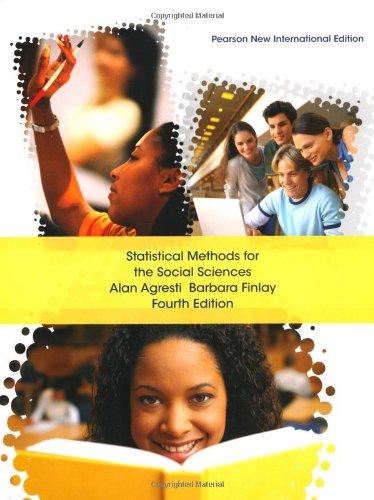9.64. A confidence interval for a population correlation p requires a mathematical transformation of r for which
Question:
9.64. A confidence interval for a population correlation p requires a mathematical transformation of r for which the sampling distribution is approximately normal. This transformation is T{r) = (l/2)l0gj(l + r)/(l - r)], where log, denotes the natural (base-e) logarithm. The transformation of the population value p is denoted by T(p). The variable T{r) is approximately normally distributed about T{p) with standard error ar = 1/ Vn — 3. A confidence interval for T{p) is T{r) ± z (a) For the correlation of 0.8338 for the data on house selling price and size of house shown partly in Table 9.4, show that T{r) = 1.20. Show thatthe standard error of r(r) is 0.1015. (b) Show that a 95% confidence interval for r(p) is (1.00,1.40). (c) Show that the corresponding confidence interval for p is (0.76, 0.89). (Unless r = 0, the confidence interval for p is not symmetric about the point estimate r, because of the nonsymmetry of the sampling distribution of r.) (d) A confidence interval for the population value p 2 of r 2 follows directly by squaring the limits ofthe confidence intervalforp. Find and interpret this confidence interval. {Note: When a confidence interval for p contains 0, the lower endpoint of the confidence interval for p 2 is 0 and the upper endpoint is the larger of the squared endpoints of the confidence interval for p.)
Step by Step Answer:

Statistical Methods For The Social Sciences
ISBN: 9781292021669
4th Edition
Authors: Barbara Finlay, Alan Agresti






